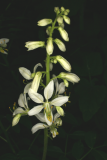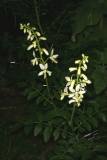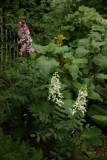Additional notes (click to expand)
Toxicity
POISONOUS.
The plant has an effect similar to rue (Ruta graveolens).
Plants for a future https://pfaf.org/user/Plant.aspx?LatinName=Dictamnus+albus
Toxic. May cause skin rashes due to saponins.
In hot weather the plant emits so much volatile and inflammable vapour that it can be lit with flame, hence the name ‘Burning Bush’
Professor Anthony Dayan, 2022
Geographical distribution
- Asia-Temperate, Eastern Asia, Korea
- Asia-Temperate, Middle Asia, Kazakhstan
- Asia-Temperate, Middle Asia, Kyrgyzstan
- Asia-Temperate, Middle Asia, Tadzhikistan
- Asia-Temperate, Mongolia
- Asia-Temperate, Russian Far East
- Asia-Temperate, Siberia
- Asia-Temperate, Western Asia, Iran
- Asia-Temperate, Western Asia, Lebanon-Syria
- Asia-Temperate, Western Asia, Turkey
- Asia-Tropical, Indian Subcontinent, India
- Asia-Tropical, Indian Subcontinent, Pakistan
- Europe, Eastern Europe, Northwest European Russia
- Europe, Eastern Europe, Ukraine
- Europe, Middle Europe, Austria
- Europe, Middle Europe, Germany
- Europe, Middle Europe, Hungary
- Europe, Middle Europe, Poland
- Europe, Middle Europe, Switzerland
- Europe, Southeastern Europe, Albania
- Europe, Southeastern Europe, Bulgaria
- Europe, Southeastern Europe, Czech Republic
- Europe, Southeastern Europe, Greece
- Europe, Southeastern Europe, Italy
- Europe, Southeastern Europe, Romania
- Europe, Southeastern Europe, Yugoslavia
- Europe, Southwestern Europe, Spain
Dictamnus albus L.
Family: RUTACEAEGenus: Dictamnus
Species: albus L.
Common names: Burning-bush; Gasplant; Dittany
Distribution summary: Temperate Asia, Europe
Habit: Perennial
Hardiness: H5 - Hardy; cold winter
Habitat: Rocky slopes
Garden status: Currently grown
Garden location: Europe & Middle East (J)
Flowering months: June, July
Reason for growing: Toxic
.JPG)


